Ever stared at your pantry, hoping for something delicious, durable, and budget-friendly to magically appear? Having cheap foods that last a long time can be a game-changer, and it’s simpler than you think to stock up.
Cheap foods that last a long time include staples like rice, beans, canned tuna, pasta, peanut butter, powdered milk, honey, and instant coffee. These items are not only wallet-friendly, but also have impressive shelf lives, providing lasting value.
Wondering how to use these cheap foods that last a long time, or curious about the storage techniques to extend their shelf life? Join us as we delve deeper into each of these pantry essentials, their benefits, and how to maximize their use in your day-to-day meals.
The Importance of Long-Lasting Foods
Having a supply of cheap foods in your pantry that last a long time can be a true lifesaver in many scenarios. From weather-related emergencies to economic uncertainties, let’s explore why these foods are so essential.
For Emergencies: The Need for Shelf-Stable Foods
During emergencies like natural disasters or power outages, having a supply of shelf-stable foods can provide necessary sustenance when fresh food may not be available. These foods do not require refrigeration and are typically ready-to-eat or require only basic preparation, making them highly convenient in challenging situations.
On a larger scale, in times of societal upheaval or major crises, food supplies can be disrupted. In these instances, having a stockpile of long-lasting foods can serve as an essential buffer, ensuring that you and your family remain nourished and healthy, no matter the circumstances.
Economic Benefits of Long-Lasting Foods
Aside from emergency preparedness, cheap food that last a long time are also economical. These items can often be bought in bulk, allowing for greater savings, and their long shelf life minimizes food waste.
In addition, during periods of financial uncertainty or tight budgets, a pantry filled with long-lasting foods can provide peace of mind. Knowing that you have a cache of nutritious, accessible meals available can ease stress and reduce the financial burden of constantly purchasing fresh foods.
Nutritional Value of Long-Lasting Foods
While their affordability and durability are key selling points, long-lasting foods can also offer substantial nutritional benefits. Despite their long shelf life, many such foods maintain high nutrient content, making them a valuable part of a balanced diet.
For example, foods like beans, lentils, canned tuna, and peanut butter are excellent sources of protein. Similarly, whole grains like brown rice and pasta can provide essential fiber and complex carbohydrates. In other words, not only do these foods last, but they pack a nutritional punch as well.
Ten Affordable Foods That Last a Long Time
Now that we’ve established the value of long-lasting foods, let’s delve into the specifics of some staple items you should consider for your pantry. From grains and protein sources to vegetables and sweeteners, here’s what you need to know.
Rice: The Budget-Friendly Staple
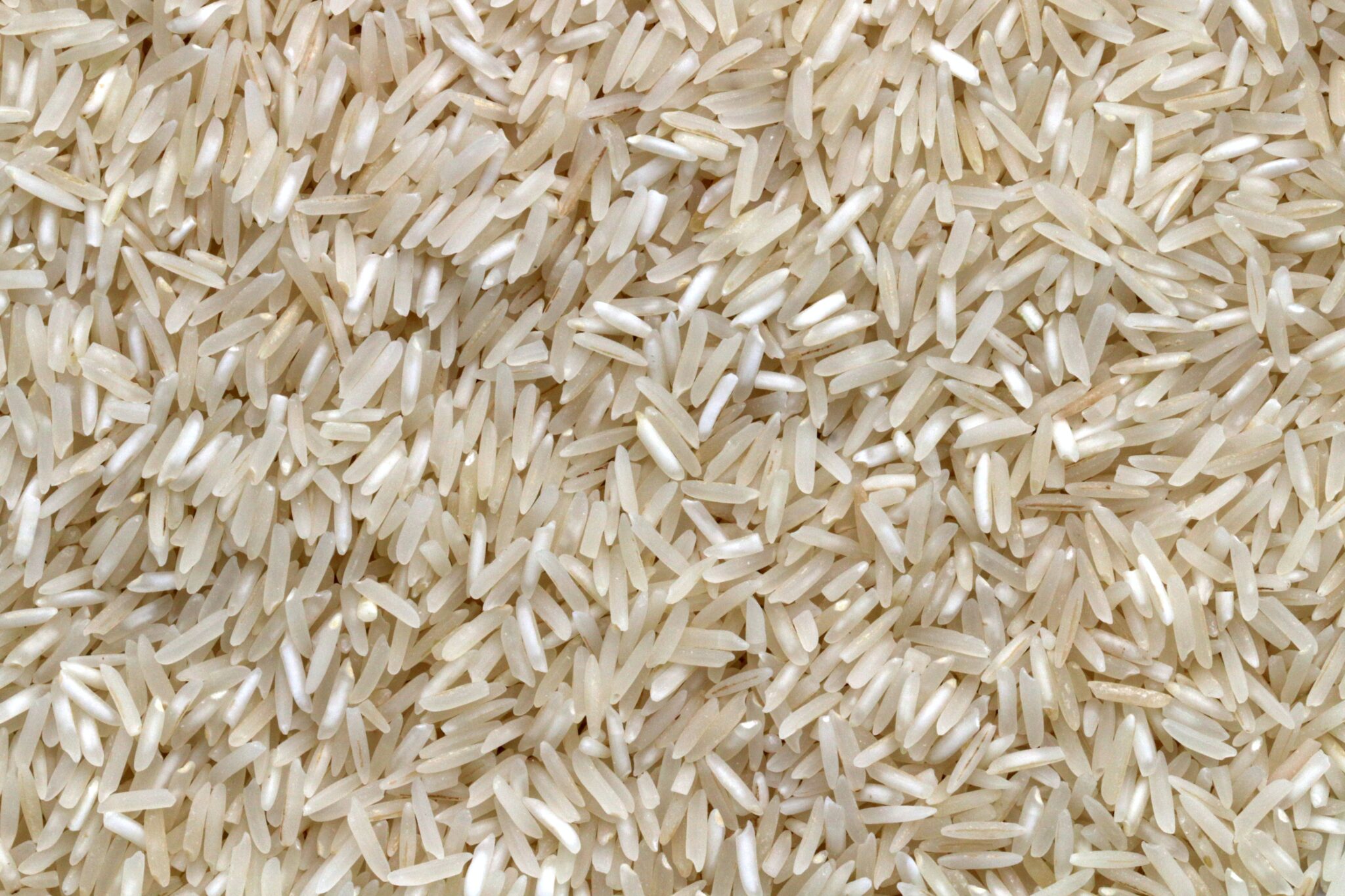
Rice is a versatile and inexpensive food that can last for years when stored properly. It’s a staple in many cultures around the world and can be used in a variety of dishes, from stir-fries to soups.
Moreover, rice is a great source of energy as it is high in carbohydrates. If you opt for brown rice, you also gain the added benefits of fiber and other nutrients. Just remember to store it in a cool, dry place to extend its longevity.
Beans and Lentils: Protein-Packed and Long-Lasting
Beans and lentils, whether canned or dried, are another affordable and long-lasting food choice. They are rich in protein, fiber, and a variety of vitamins and minerals, making them an excellent choice for vegetarians and meat-eaters alike.
Dry beans and lentils can last indefinitely if stored in airtight food bunker storage bags and in a cool, dark place. Even canned varieties can last several years, providing a ready-to-use option for quick meals.
Canned Tuna: Shelf-Stable Source of Protein and Omega-3s
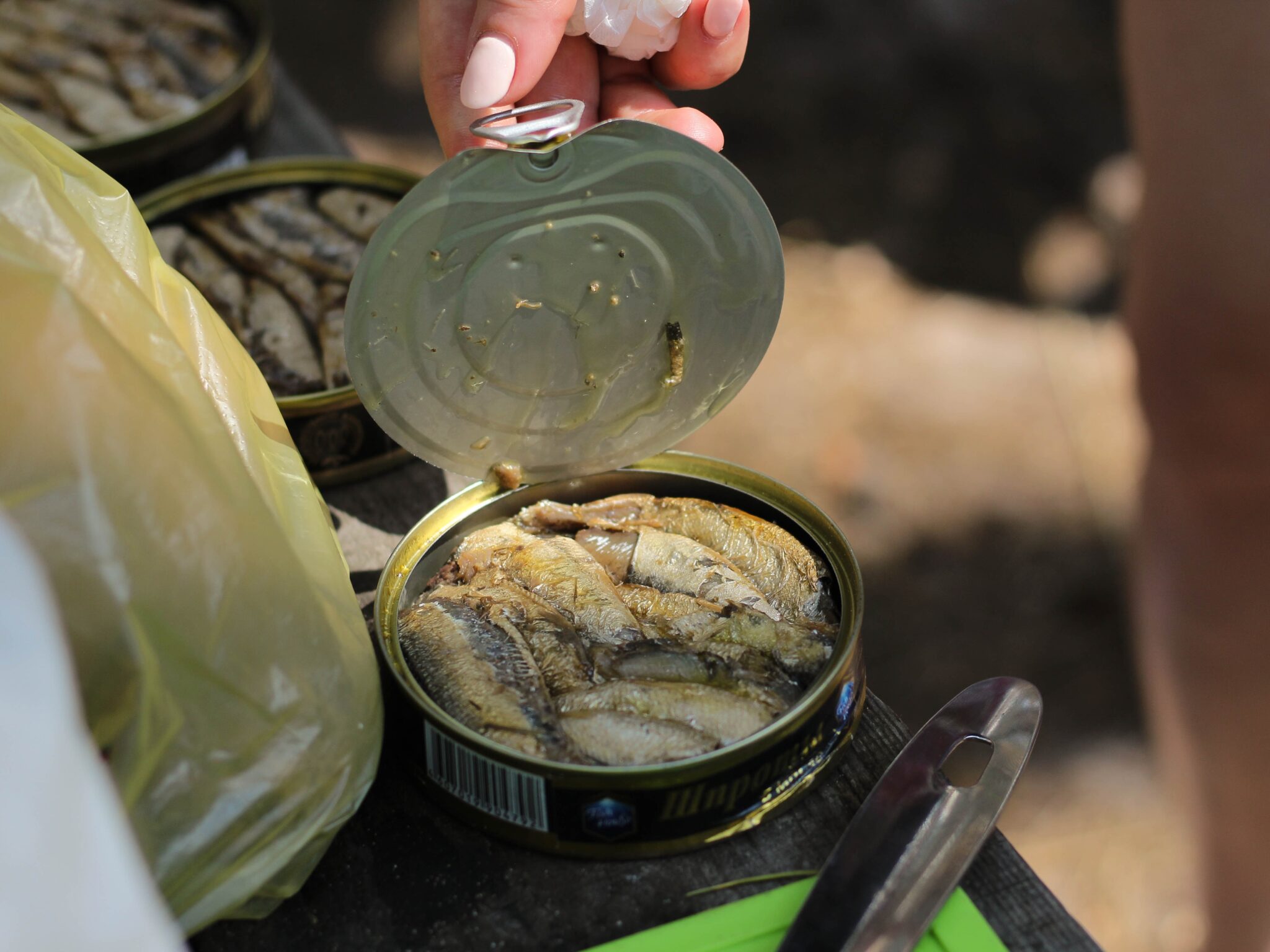
Canned tuna is a convenient and shelf-stable source of high-quality protein, as well as heart-healthy omega-3 fatty acids. It’s a flexible ingredient that can be used in everything from salads to casseroles, making it a handy pantry staple.
As with other canned foods, ensure to store your canned tuna in a cool, dry place. It can generally last for several years, though it’s always a good idea to check the best-by date for optimal flavor and quality.
Pasta: A Filling and Cheap Option
Pasta is a favorite in many households, and for good reason. This food is cheap, filling, and can last for a long time in your pantry. From spaghetti to macaroni, pasta comes in numerous shapes and sizes suitable for different recipes.
While pasta is primarily a source of carbohydrates, choosing whole grain varieties can also add fiber and various nutrients to your meals. Like other dry goods, ensure to store pasta in a cool, dry place for maximum shelf life.
Canned Vegetables: Nutritious and Long-Lasting
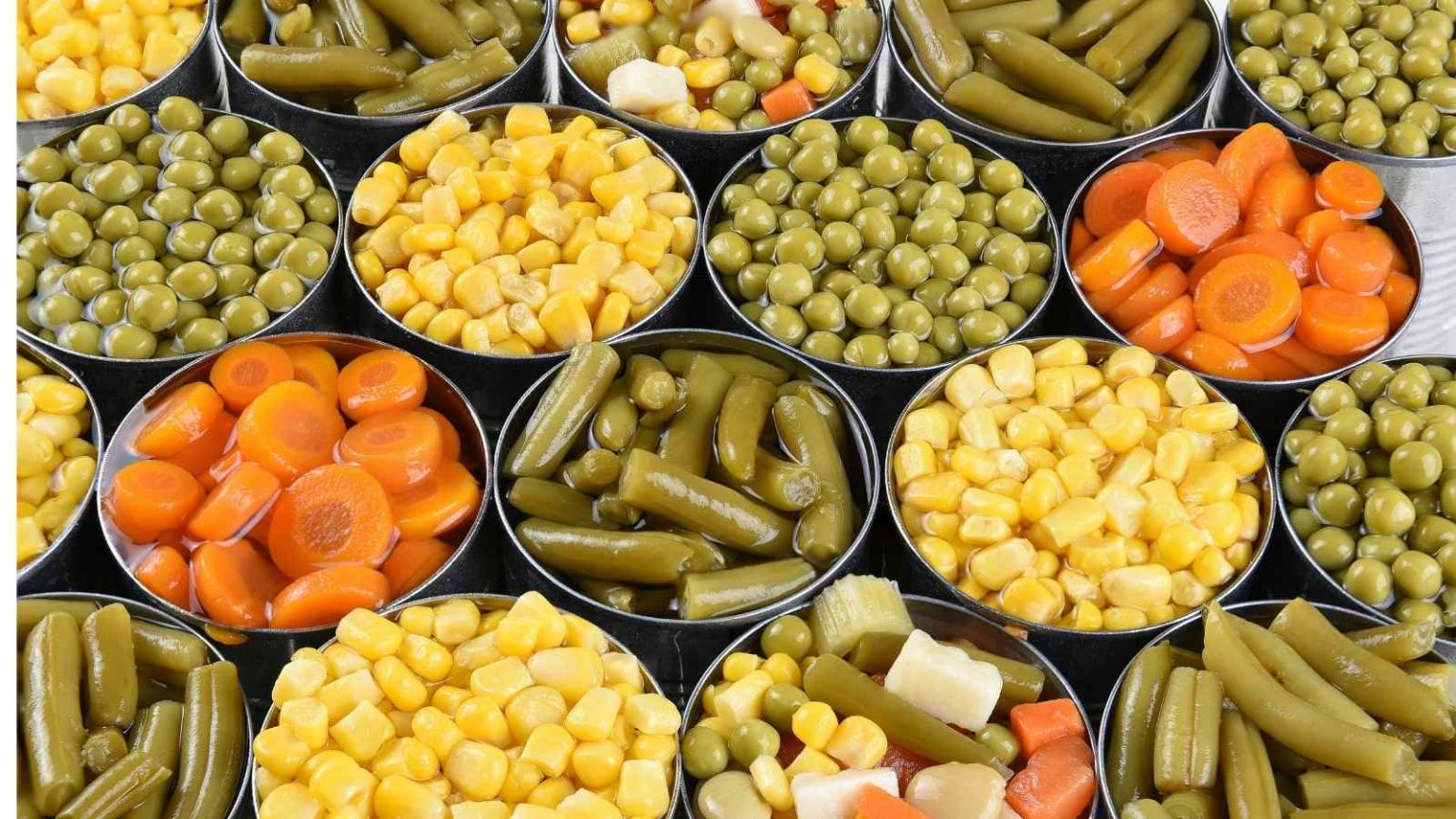
Canned vegetables are a great way to have nutritious food on hand that won’t spoil. They are often canned at peak freshness, preserving their nutritional content and flavor.
While fresh vegetables are always a great choice, canned veggies offer the convenience of longer shelf life and easy meal prep. If you want fresh, you can opt to dehydrate for long-term storage.
Peanut Butter: A Long-Lasting Protein Source
Peanut butter is not only a tasty treat but also a durable food that offers a good dose of protein and healthy fats. It’s versatile, serving as a great spread, a flavorful addition to sauces, or even a satisfying ingredient in desserts.
In terms of shelf life, unopened jars of peanut butter can last for up to a year in your pantry. Even after opening, it can last for months if stored properly.
Powdered Milk: Versatile and Shelf-Stable
Powdered milk is an inexpensive and long-lasting alternative to fresh milk. It can be used in baking, cooking, or simply rehydrated for a glass of milk or to add to your morning cereal.
While it might not have the exact same flavor as fresh milk, its nutrient content is similar. It can provide essential nutrients like calcium and vitamin D. Remember to store it in a cool, dry place to prevent clumping and maintain its quality.
Honey: The Sweetener That Lasts Indefinitely
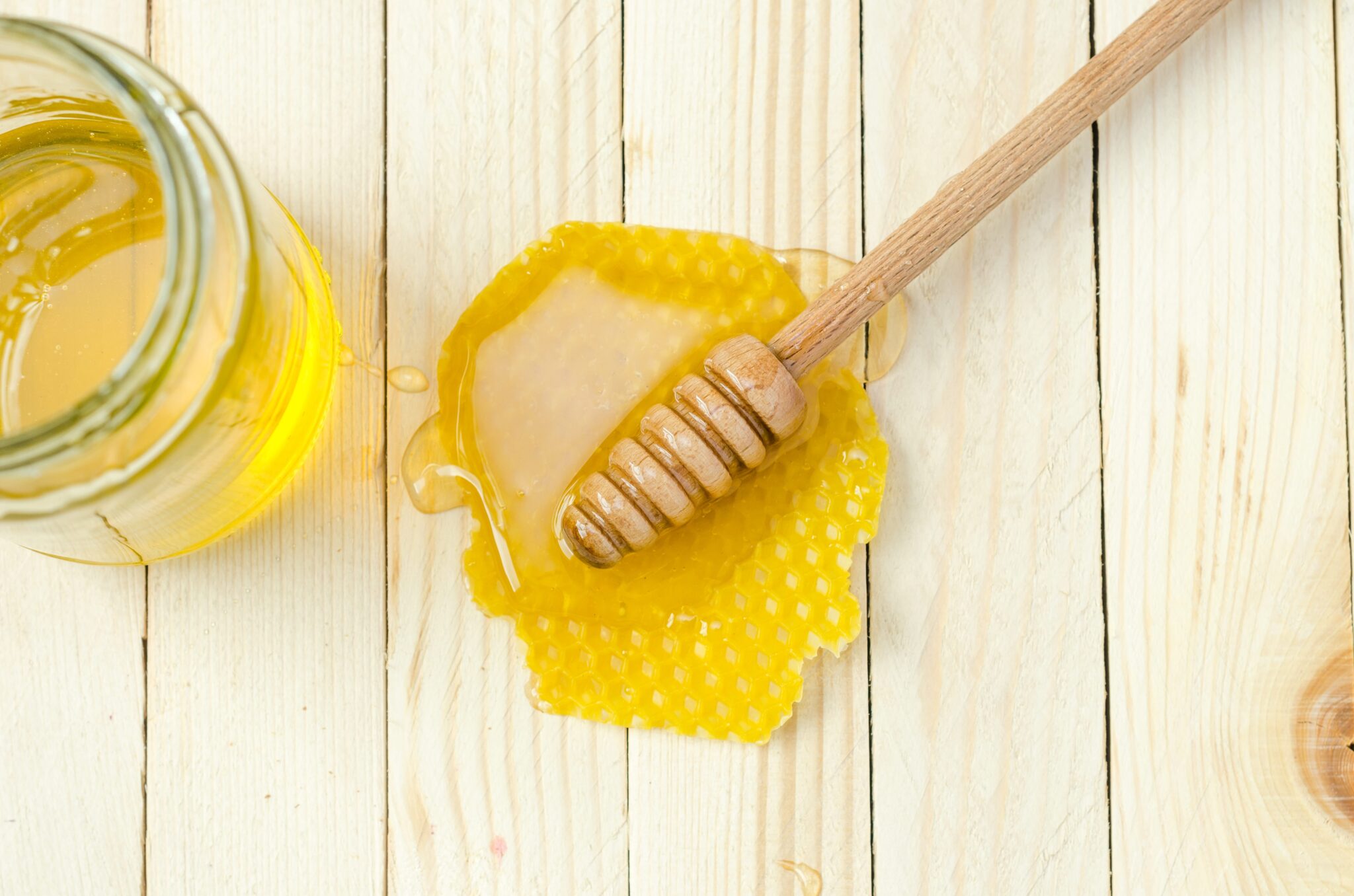
Honey is a natural sweetener that, due to its low moisture content and acidic pH, can last indefinitely if stored properly. It’s a healthier alternative to refined sugar and can be used in tea, baking, or even as a topping for toast or pancakes.
While honey can crystallize over time, this does not mean it has gone bad. Simply placing the jar in warm water can return it to its liquid state.
Canned Soups: Easy Meals That Stand the Test of Time
Canned soups are affordable, hearty, and can be stored for years, making them an excellent addition to your long-lasting pantry. From broths to creamy soups, there’s a variety to suit every preference.
In addition to being ready-to-eat, canned soups can also serve as a base for other dishes. Adding extra vegetables, grains, or proteins can easily enhance a canned soup into a full, nutritious meal.
Instant Coffee: The Wake-Up Call That Won’t Expire
If you’re a coffee lover, instant coffee is a cheap option that last a long time. Though it may not replace the taste of freshly brewed coffee, it can certainly come in handy when you’re in a rush or when your regular coffee supply runs out.
Instant coffee can last up to twenty years unopened, and even after opening, it can stay fresh for 18 months or more. Store it in a cool, dry place to maintain its best quality.
You might be interested in checking out our list of survival food you can get from the grocery store.
Storing Your Long-Lasting Foods: Tips for Maximizing Shelf Life
Having long-lasting foods is one thing; storing them properly to maximize their shelf life is another. Let’s explore some storage techniques that can help keep your pantry items at their best for longer.
Proper Storage Techniques for Dry Goods
Dry goods like rice, pasta, beans, and lentils should be stored in a cool, dry place. Exposure to heat and moisture can lead to degradation and, in some cases, the growth of mold or pests.
Consider investing in airtight containers for storage. Not only do they help protect your food from environmental factors, but they also make organization easier and prevent any accidental spills or messes in your pantry.
How to Keep Canned Foods at Their Best
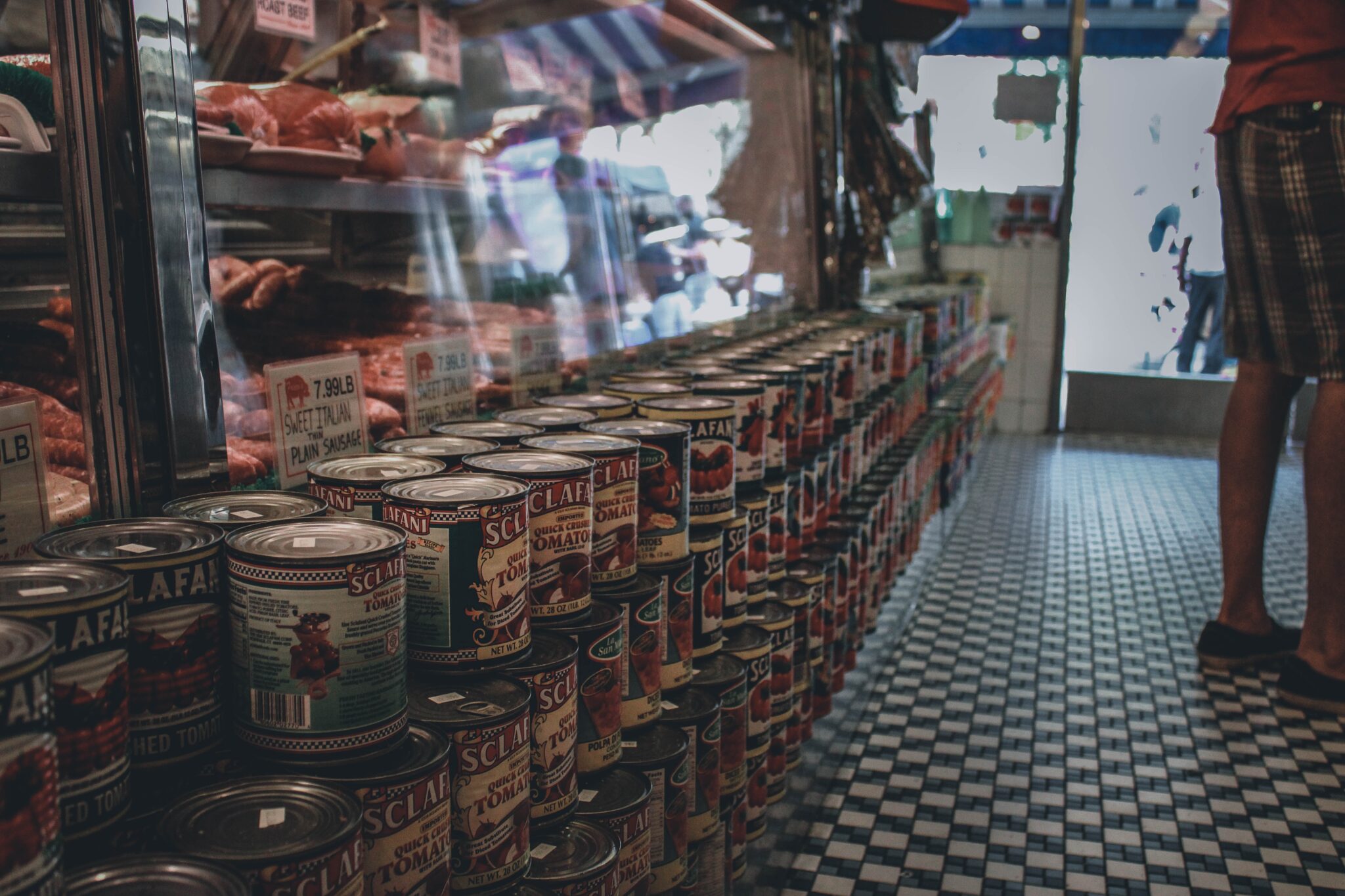
Canned goods have a long shelf life thanks to the canning process, which preserves the food inside. However, they still need to be stored properly to maintain their quality.
Store canned foods in a cool, dry place. It’s best to avoid extreme temperatures, as these can affect the quality and safety of the food inside the can. Also, remember to always check the can for any signs of damage before use, as dents or rust can compromise the integrity of the can.
Storing Honey and Peanut Butter for Longevity
Honey, while it has a 20-year shelf-life, still require proper storage. Both should be stored in a cool, dry place to prevent degradation.
Honey should be kept tightly sealed when not in use, as exposure to air can speed up the crystallization process. Peanut butter, particularly the natural kind, should be refrigerated after opening to maintain its quality and prevent the oil from separating.
Creative Meal Ideas Using Long-Lasting Foods
Stocking up on long-lasting foods doesn’t mean eating boring or repetitive meals. There are numerous creative and delicious ways to use these pantry staples. Let’s explore some of these.
Simple and Nutritious Recipes Using Your Pantry Staples

Your pantry staples can be transformed into a variety of meals with a little creativity. Rice and beans can form the base of a satisfying burrito bowl. Canned tuna can be used to make a flavorful pasta salad.
Peanut butter can be combined with honey and oatmeal to create no-bake energy balls. Powdered milk can be used in baking recipes or to make creamy sauces. The possibilities are endless!
Meal Prep with Long-Lasting Foods: Saving Time and Mone
Meal prepping with cheap foods that last is a great way to save time and money. For example, you can cook a large batch of rice and beans at the start of the week, and then vary the accompaniments and seasonings for different meals.
Canned soups can be dressed up with additional veggies or proteins and served over several days. Pasta can be cooked in bulk and used in different dishes, from pasta salads to casseroles. This way, you get the most out of your affordable, long-lasting foods, while also minimizing cooking time throughout the week.
Building a Cost-Effective, Long-Lasting Pantry
In wrapping up, we’ll explore how to budget for a pantry that’s both cost-effective and nutritious. We’ll also distill what we’ve learned and present the key takeaways on why investing in long-lasting foods offers multifaceted benefits.
Budgeting for Your Pantry: Balancing Cost and Nutrition
When stocking your pantry, it’s important to strike a balance between cost and nutrition. While it’s great to have cheap, prepper foods that last a long time, you also want to ensure they provide the nutrients you need.
Include a variety of food groups – grains, proteins, fruits and vegetables, and dairy or alternatives. You can also learn to preserve perishable items like eggs, so you have more options. Buying in bulk can often save money, but remember to store your foods properly to maximize their shelf life and quality.
The Takeaway: How Investing in Long-Lasting Foods Benefit You
Investing in cheap foods that last a long time has clear benefits. It provides you with a safety net in emergencies, reduces your food budget, and minimizes food waste. Plus, with a bit of creativity, it can lead to a plethora of delicious and nutritious meals.
In essence, building a pantry filled with these foods is not only an investment in your physical wellbeing, but also your financial health and peace of mind. So next time you’re at the store, consider adding these affordable, durable, and versatile foods to your shopping list.
